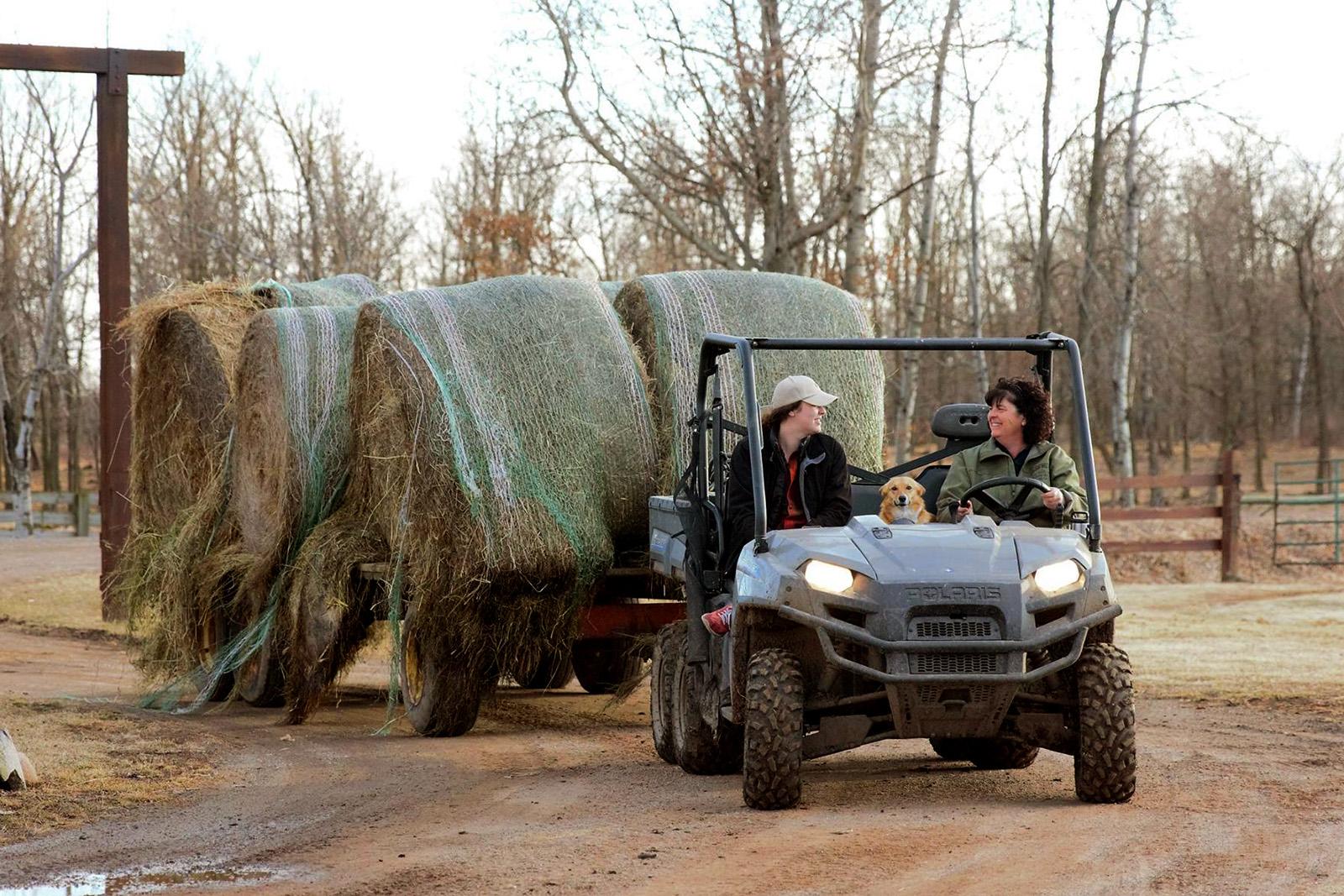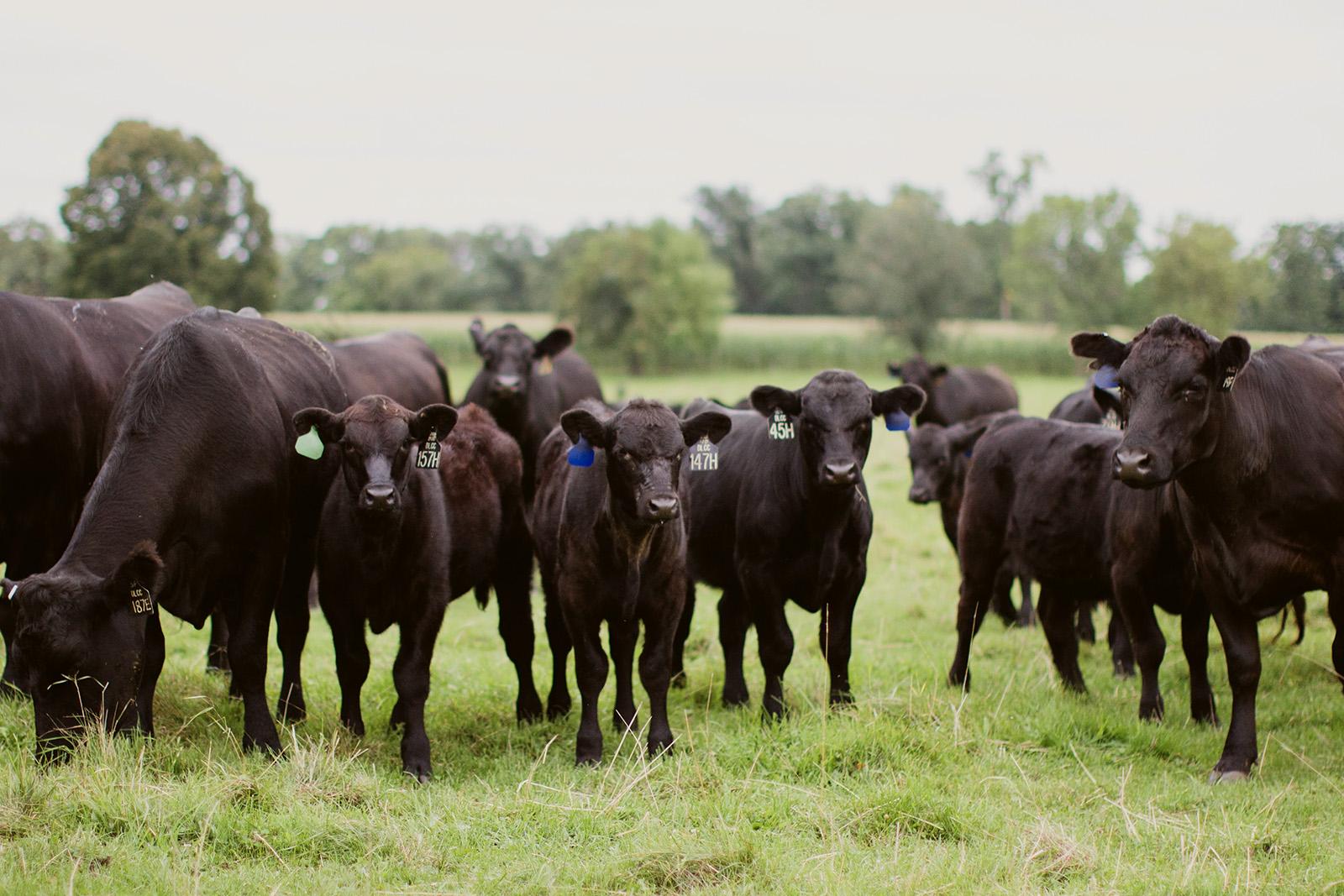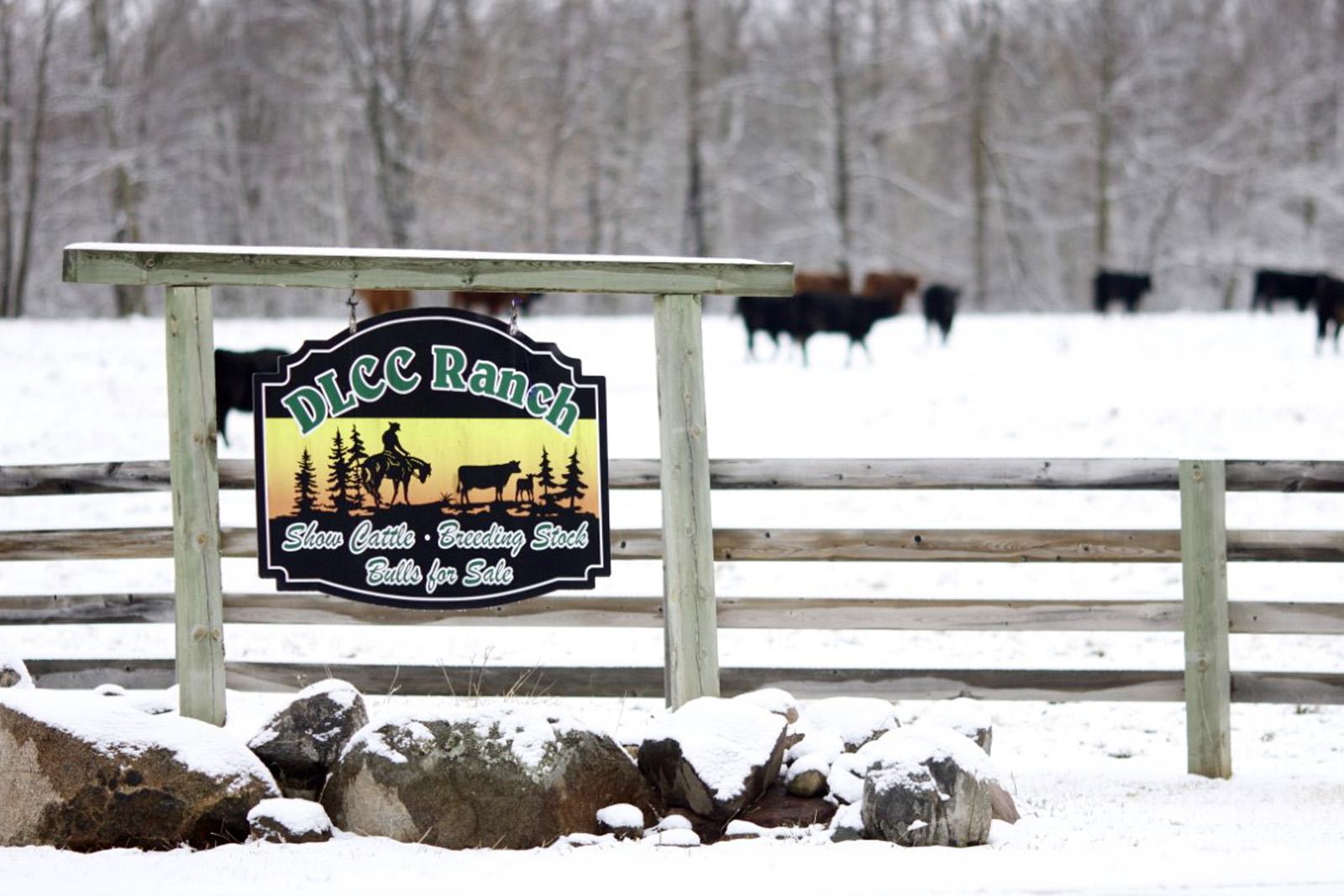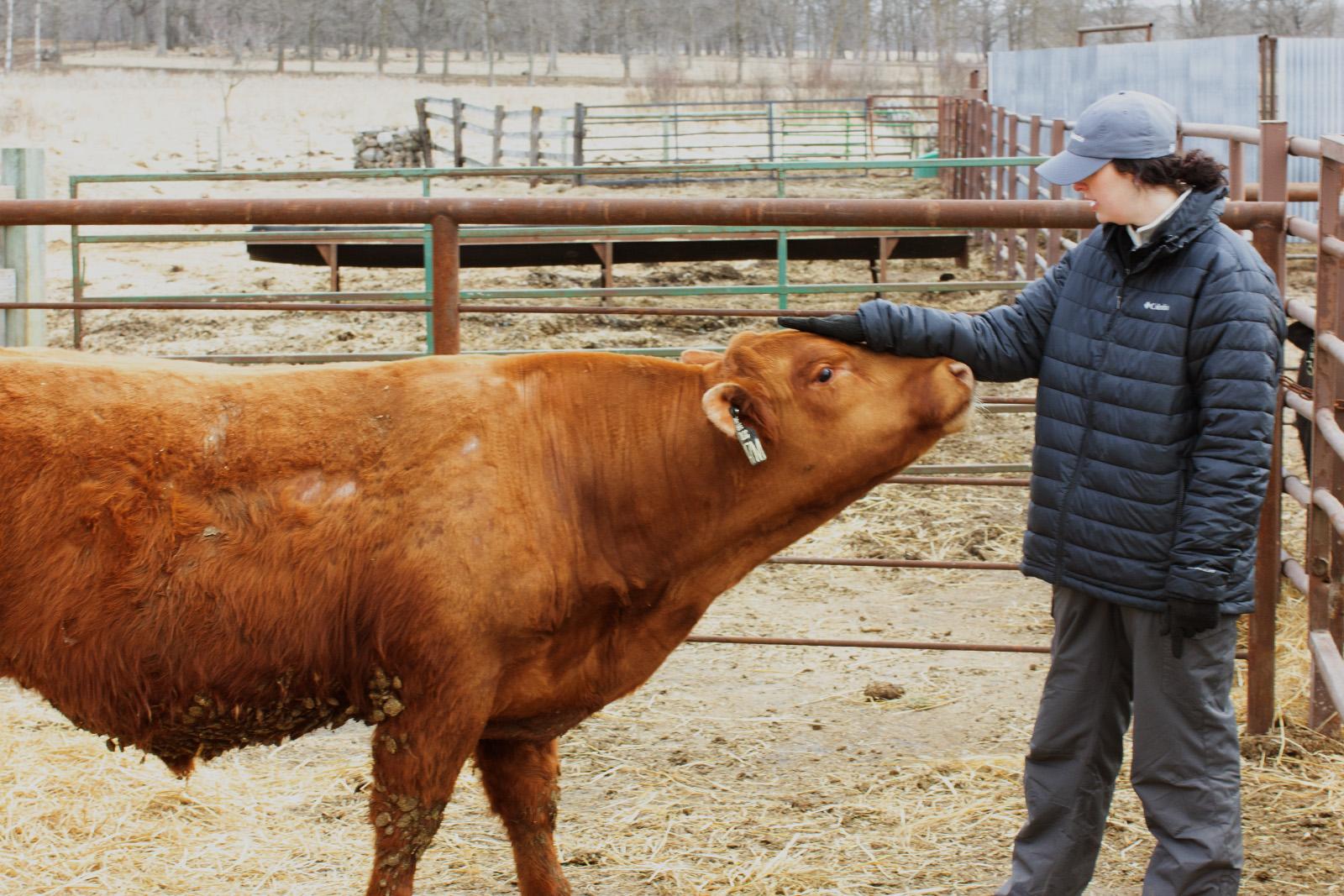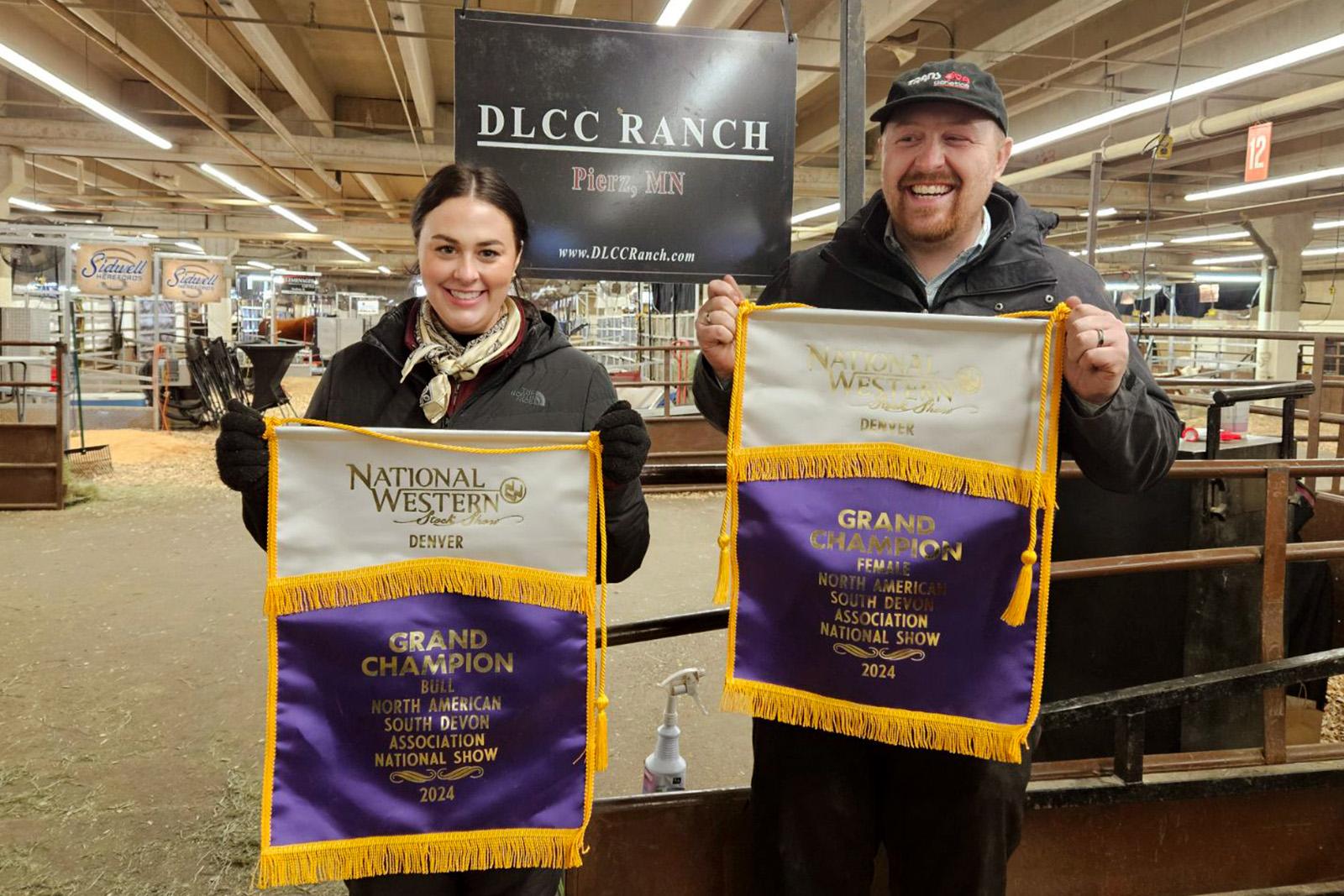- Home
- The Headlines
- Cattle Ranching, Public Relations and the Drive That Fueled Both
Cattle Ranching, Public Relations and the Drive That Fueled Both

Grounded by Ag, Driven by Purpose
At Swanson Russell, the outdoors isn’t just where we spend our weekends — it’s where many of us got our start. For Public Relations Counsel Leah Giess, that place was her family’s cattle ranch, where long days, early mornings and a deep connection to the land shaped who she is today. Her Passion Profile explores how growing up in agriculture instilled a deep sense of purpose, fueling how she shows up for her clients and the causes she cares about most. Saddle up for a story about hard work, lasting values and what it means to persevere.
Swanson Russell: What’s your background with agriculture and cattle?
Leah Giess: I’m the fourth generation of a cattle family. We own and operate DLCC Ranch, a seedstock operation in Pierz, Minnesota, which specializes in South Devon and South Devon Composite cattle. The composites include Angus, Simmental, Red Angus and some Limousine. We market towards commercial cattlemen who are looking for outcross genetics. Many producers are looking for an English outcross that are different from Angus, so we try to offer something unique with the South Devon breed, which originated in Devonshire, England. It’s a niche market, but we offer the largest selection of South Devon genetics in the U.S.
I also went to Kansas State University, where I was an agricultural communications and journalism major. I was very involved with ag organizations — Block and Bridle, Collegiate Cattlemen's and I was the president of the Ag Communicators of Tomorrow group. Growing up, I was also very involved in the North American South Devon Junior Association, holding multiple leadership roles during my time there. This gave me the opportunity to travel across the U.S. and compete in shows and youth competitions. My family and I are also involved in the World South Devon Society, so from a young age I was fortunate enough to travel abroad to the United Kingdom, Australia and Canada and go on cattle tours to meet people from around the world to see how they run their ranches.
SR: Can you tell us more about the family ranch?
LG: My dad's family ran a ranch in western Kansas. My mom’s family had ranches in Minnesota and South Dakota. When my parents got married, they ran the Charolais herd for my grandparents, and over the years, they've probably raised every breed of cattle imaginable. Eventually, they settled on South Devons and started DLCC Ranch in 1980.
Both my parents are full-time ranchers, but my brother and I are still very involved in the operation too. We host an annual production sale in April where we usually sell about 100 bulls and 50 females. An event that size requires a lot of time and effort from everyone in the family. My brother is a PhD geneticist for the Simmental Association, so obviously he contributes a lot to the breeding decisions. I help with the marketing and PR. My sister-in-law also has a marketing background and does a lot of photography for marketing and sales.
SR: Do you have special memories from growing up in a cattle family?
LG: My parents started taking me to cattle shows when I was a baby and those have been a constant in my life to this day. Growing up, other kids traveled for sports or went on family vacations — we went to cattle shows. I wouldn't have had it any other way because I got to travel so much. I've been all over the United States and I've made amazing friends and lifelong connections. The South Devon community is very small and tight knit. Going to junior nationals every year in a different state, you see people you only get to see a couple of times a year, and they’re like family.
On the ranch, some of my favorite memories are putting the cattle out to pasture every spring. In Minnesota it snows a lot and it’s very, very cold all winter long, so the cattle are wintered in the feedlot. When it’s finally time to go out to pasture in the spring, they’re all so excited to be out on the grass – I love seeing that.
SR: Tell us about your role at Swanson Russell and your work with agriculture clients.
LG: I'm a Public Relations Counsel specializing specifically in the cattle industry. I primarily do a lot of work for Checkoff-funded accounts like the Cattlemen's Beef Board (where we do their producer communications program), Beef Quality Assurance (another Checkoff-run program) and the Texas Beef Council. As a PR Counsel, I work on content strategy and help clients connect with producers. For example, with the Cattlemen's Beef Board, we’re trying to help producers understand where their Beef Checkoff dollars are going and how that money is coming back around to benefit the industry and producers. I think it's really fun to see all of the cool programs accomplished by the Beef Checkoff. And we get to report on it in multiple different ways — print newsletters, e-newsletters, social media, traditional PR programs and things like that.
SR: How has your background in ag impacted your work?
LG: Growing up in the industry, I understand the audience my clients are trying to communicate with, so that's helpful. But that experience has also given me a sort of mental toughness. On top of daily life on a ranch... making sure cattle are fed, making sure calves get on the ground safely in the spring, fixing fences, et cetera... ranchers are responsible for being stewards of the animals and the land.
We're responsible for the health and wellness of these cattle. And things outside your control just go wrong sometimes. I've seen the devastation that wildfires and drought and blizzards can inflict on cattle and on ranching families. It’s not just a loss of money — it’s a loss of life many times. And there’s nothing you can do to control it. You just have to keep going, try to see the positive things and react as positively as you can. That's something I try to not only bring into my job, but to every aspect of my life.
“Things outside your control go wrong sometimes. You just have to keep going and react as positively as you can.”
SR: Are there any misconceptions about the cattle industry today that you’d like to address?
LG: Cattle producers have a lot on their plate... keeping cattle fed and protected from the weather, worrying about feed prices and markets, keeping equipment running and so on. And on top of all that, they have this perception battle to fight.
A common misunderstanding is that the beef industry is cruel or that producers mistreat their animals. According to the National Cattlemen’s Beef Association, eighty five percent of U.S. cattle producers are Beef Quality Assurance certified. That means these producers have taken time out of their lives to learn and adopt the best management practices for their cattle — not just because it helps their bottom line, but because it’s the right thing to do. They want their animals to have the best life possible while they are here.
Another misconception is that the beef industry is dominated by factory farms or corporate farming. In reality, 90 percent of cattle operations in the US are still family owned, according to the National Cattlemen’s Beef Association — some just happen to be really big operations.
A final misconception is about climate change. A lot of people claim the cattle industry is a major factor making climate change worse, but according to the EPA, only 2 percent of U.S. emissions come directly from beef cattle. Plus, the industry is actively supporting research to further decrease that number with new technologies and management practices. That’s to say nothing about the environmental benefits of maintaining grasslands for grazing.
There are a lot of things the public misunderstands about the cattle industry, especially because so many people now live in cities and are disconnected from where their food comes from, but that’s where public relations agencies like ours come in to help producers and industry organizations communicate the facts.
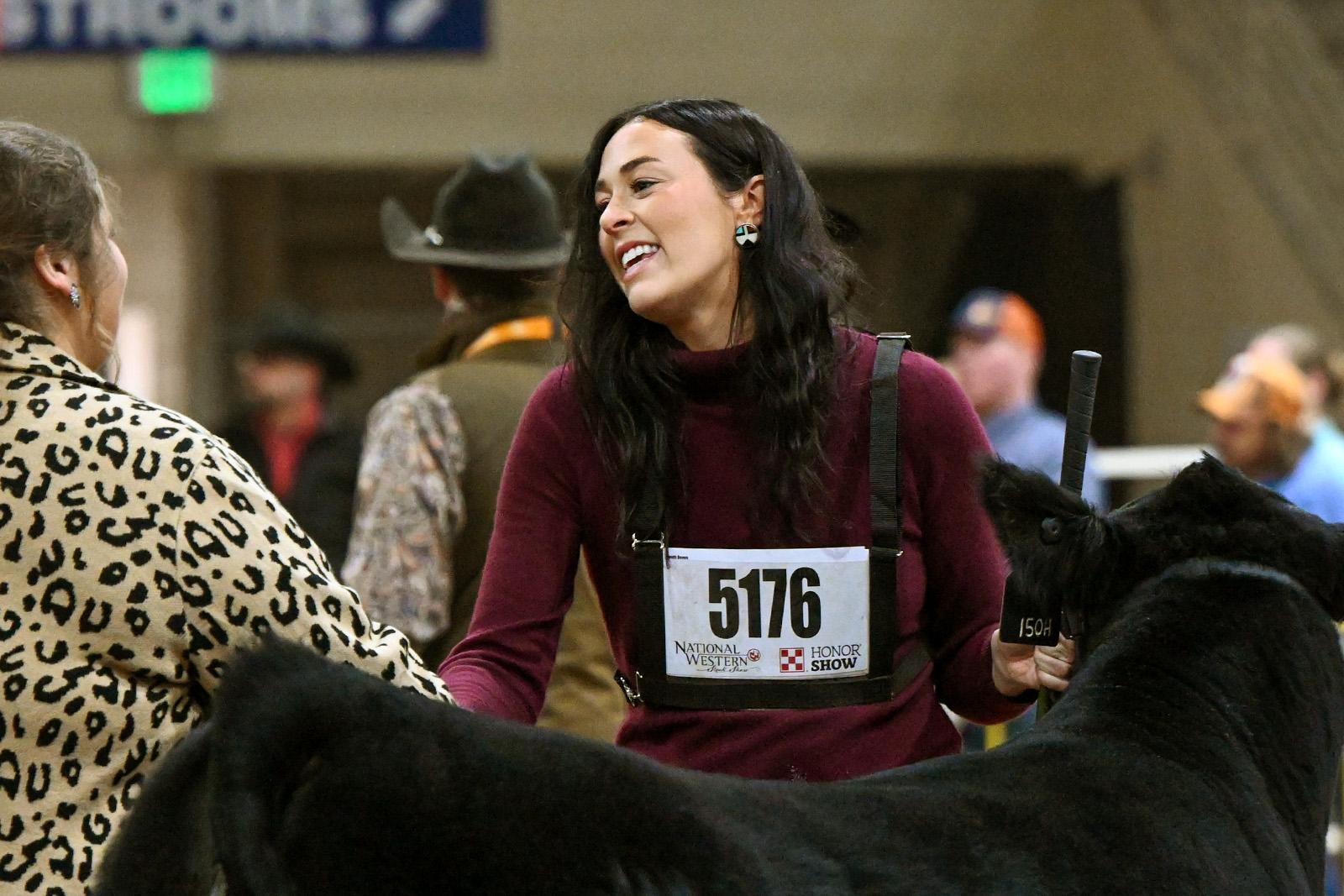
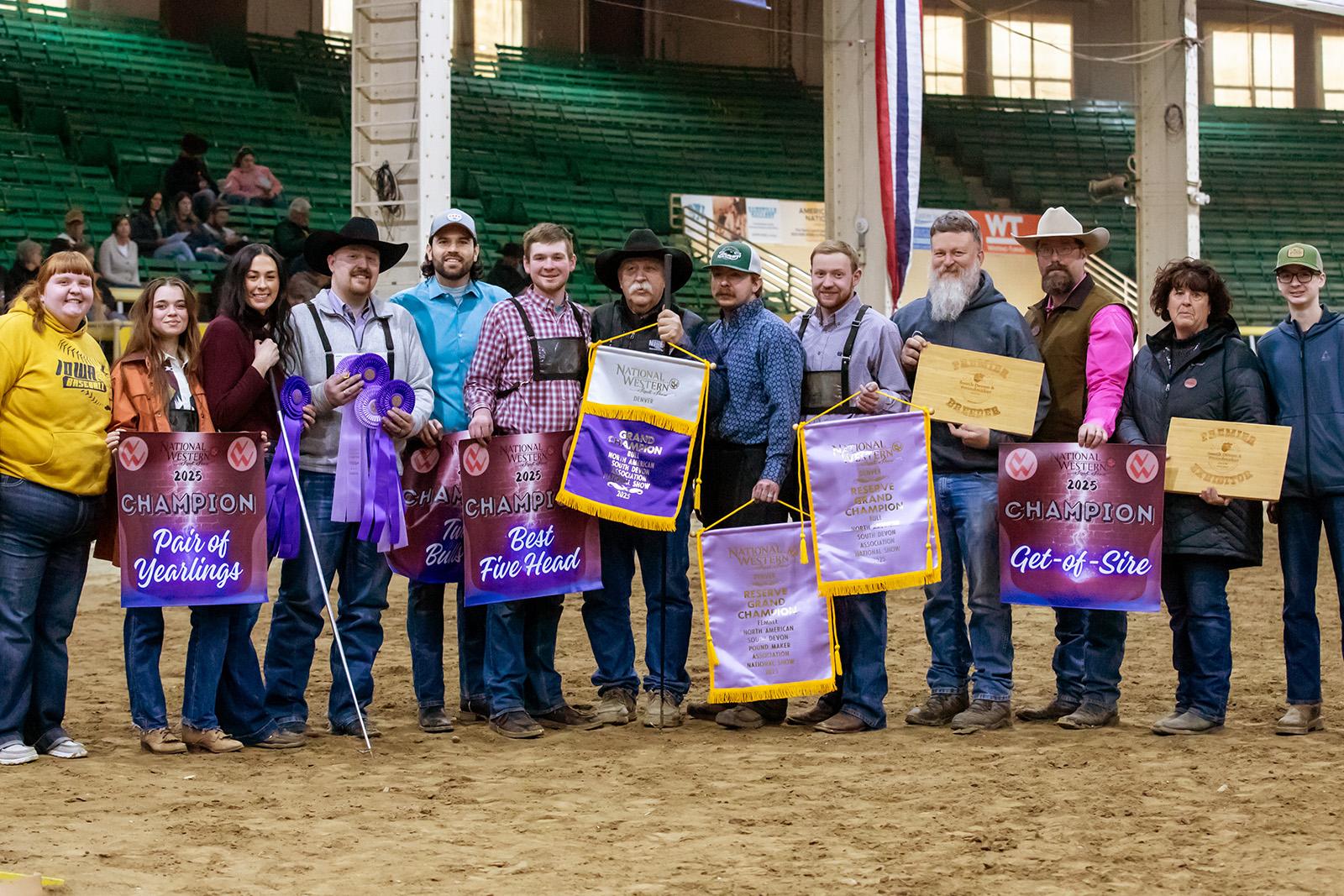
SR: What projects are you particularly proud of?
LG: For the Cattleman's Beef Board, we do a quarterly print newsletter called The Drive. It's a big publication — it goes to producers across the U.S., so it's a big responsibility. I like writing and then working with Swanson Russell designers on recommendations for photos and layout. We've had a lot of success with it. As much as people are moving to social media and e-newsletters, we’ve found that cattle producers still prefer to receive print content in the mail. We've won multiple national awards for The Drive from organizations like NAMA (National Agri-Marketing Association), the Ag Relations Council and the Livestock Publications Council. I'm very fortunate to be a part of it.
SR: Do you have any final thoughts you’d like to share about the industry?
LG: Ultimately, cattle and the larger ag industry are critical to the health of the economy. We're not only feeding people here in the U.S., but we're exporting meat, grain and more to feed people around the world. We export an incredible amount of beef because there’s a huge demand abroad for the high-quality beef we raise here in the U.S., and consumers in other countries are willing to pay top dollar for it. Other countries can’t say they raise the quality of beef we do, and I think that’s something everyone involved in the U.S. beef industry should be proud of.
Our passion for the outdoors helps us Make Belief™ for brands. Learn about our approach, explore our work and sign up for our newsletter to see all the reasons why we're the Nation's Leading Agency for Brands That Work and Play Outdoors.
